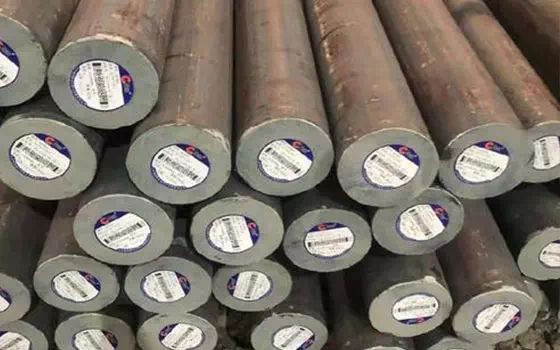Welcome to Zhishang Steel Co., Ltd.
TEL: (Gavin) +86-15665898999 | Email : info@zhishangsteel.com
Location:Home>>News>>Q&A » How does carbon get added to iron?

In nature, iron occurs mainly in the form of iron ore. Iron ore is composed of one or several iron minerals and quartz, feldspar and other gangue, iron ore is a mechanical mixture of various compounds. Commonly used iron ore is divided into four types: Hematite, Magnetite, limonite and siderite. Among them, hematite and magnetite have greater economic value and are more common. There are three oxides of iron, ferrous oxide (FeO), iron oxide (Fe2O3) and iron trioxide (Fe3O4). The iron in iron ore is usually in the form of iron oxide. Iron ore is loose, to say the least, like soil or a sponge.
The process of blast furnace ironmaking is to throw iron ore, coke, flux, etc., from the top of the burning blast furnace. The blast furnace burns coke, and the carbon monoxide produced by incomplete combustion of coke is light and will rise in the furnace. At the top of the furnace, carbon monoxide meets iron ore and so on, and the temperature there is about 200 degrees Celsius. Part of the iron oxide in the ore is reduced to iron, part of the carbon monoxide CO becomes carbon dioxide CO2, and a part exists in the form of free carbon. Free carbon enters the internal pores of iron ore and reduces the remaining ferrite compounds to iron. The rest of the carbon is dissolved by iron. As to why carbon is soluble in iron, it will be described later in the crystal structure of iron and iron-carbon alloys. The iron ore keeps falling in the furnace, the temperature is getting higher and higher, the carbon monoxide is getting more and more abundant, the iron oxide in the iron ore is constantly reduced to ferrous oxide, and ferrous oxide is constantly reduced to iron.
At the same time as the iron oxide in the iron ore is reduced, it goes into the pile of charge in the furnace, and the limestone and gangue react to form the slag. The more the charge falls in the furnace, the higher the temperature, the limestone decomposes at high temperatures, and the calcium oxide and acid veins generated are also turned into slag. Iron is heavy, but slag is light. At the bottom of the furnace, at the tuyere, molten iron mixed with slag into the hearth, and the slag floated up. You skim out the slag, you're left with a premium. Molten iron can be cast into iron ingots. Now there are also continuous casting and rolling, direct timber.
In the process of blast furnace ironmaking, the iron reduced from iron ore is solid and spongy, and the carbon content is very low. As the spongy iron falls and melts in the furnace, it absorbs some of the carbon and becomes saturated with it. For pure iron, at 1148℃, solid iron is the most inclusive of carbon, and the maximum mass fraction of carbon in iron-carbon alloy is 2.11%. How much carbon? There are only two more ways: one is that the temperature is higher, the temperature is higher than 1148℃ and the mass fraction of carbon is higher than 2.11%, a part of the iron will become hot metal, and the carbon will dissolve into the liquid iron. It should be noted here that the melting point of pure iron is about 1548 ° C. Within a certain range, with the increase of carbon content in hot metal, the solidification temperature of hot metal will continue to decrease, from 1538 ° C to 1148 ° C. Another way is to combine iron with carbon to form the compound Fe3C. At room temperature, most of the carbon in iron exists in the form of Fe3C.

ABOUT USOverviewThe company mainly deals in color-coated, galvanized, stainless steel pipes, stainless steel coils, stainless steel plates of various materials; hot-rolled series of rebar, medium and heavy plates, coils, I-beams, angle steels, channel steels, H-beams and other steel products and deep processing Service. (The company’s annual invent···